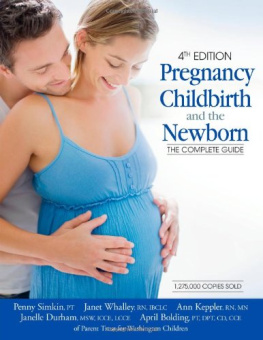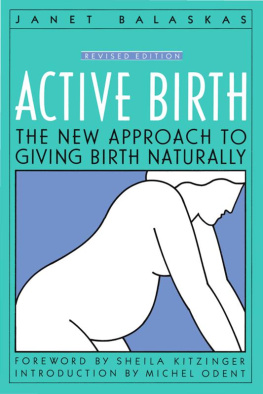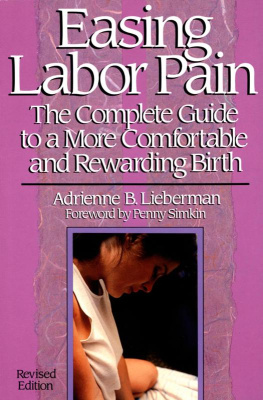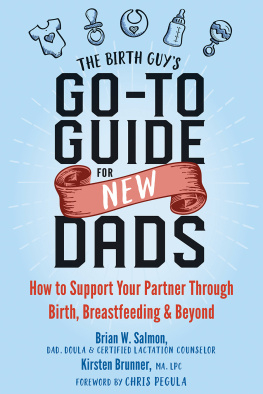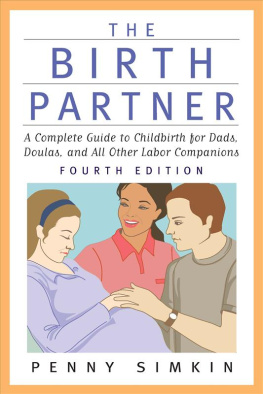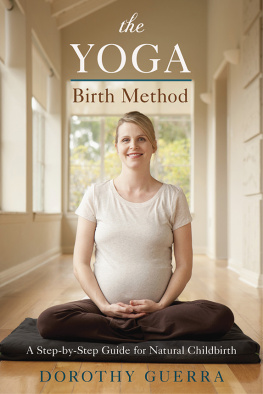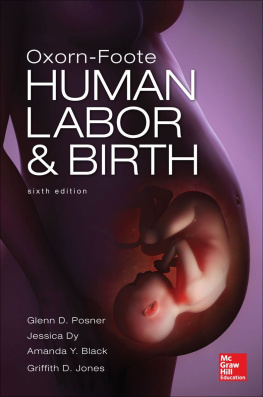
Preface
I D LIKE TO EXPLAIN WHAT LED ME TO WRITE THIS BOOK, now in its fifth edition. The first edition was published in 1989, after I learned some truths about what it means to give birth and what it means to be a birth partner who deeply loves the person giving birth. One of these truths is this: how one gives birth matters to ones self-confidence and self-esteem, to the babys long-term health, and to ones relationships with their partner, baby, and other loved ones.
This is as true today, with this fifth edition, as it was in 1989 and for generations (even millennia) before.
Heres another very important truth: how a person is cared for and supported during birth is a major influence, not only in how they give birth but also in how they feel about the birth for years to come. Yet, medical care before and during childbirth focuses almost exclusively on the physical safety of the baby and birthing person and places little emphasis on their emotional well-being, relationship with the partner, and readiness to parent. Such matters are given low priority in our very expensive health care system, which is beset by nursing shortages, pressure to increase the use of medical and surgical interventions while increasing efficiency, reduction of psychosocial support services, threats of malpractice lawsuits, and other factors that work against personalized, flexible, family-centered care.
I learned the importance of emotional care during labor when, in the late 1980s, I conducted a study of peoples long-term memories of their experiences giving birth to their first child. These people had attended childbirth classes I taught between 1968 and 1974. They had sent me their birth stories shortly after giving birth. For my study, I contacted some of those people fifteen to twenty years later and asked them two things: to write their birth stories again as they remembered them and to rate their satisfaction as they looked back on their childbirth experiences.
In comparing the two stories from each person, I was astounded at how clearly they remembered their birth experiences and how consistent they were with their original stories, despite the intervening years! As we did not have copy machines in those days and they had not written their stories for themselves after the births, I possessed the only stories (which I photocopied and returned to them at the end of the study!). I then interviewed each person and discovered they had detailed memories of their doctors and nurses (there were no midwives practicing in my area at that time). Everyone vividly remembered specific things done and said to them. Many could quote the exact words! Some actually wept as they recalled some of these thingseither with joy over the kindness and care they received or with sadness or anger over being treated disrespectfully or thoughtlessly.
Briefly, those who felt they had been well cared for by the professional staff reported the highest satisfaction, even if the labors had been long or complicated. Those who felt they had been treated disrespectfully or ignored reported the least satisfaction. Also, those who reported a great sense of accomplishment in giving birth were the most satisfied. They felt they had been in control and that the birth experience had been good for their self-esteem. The less satisfied women did not have these positive feelings.
The presence of husbands or other loved ones was unusual because, at the time, it was not customary for men, or even female relatives, to attend childbirth classes or the births of their babies. In fact, my classes were part of two emerging radical trends: unmedicated natural childbirth and the presence of husbands (with the marriage certificate to prove it!) to attend the births of their babies and assist their wives in giving natural births. The classes encouraged men to take the role of coach for the birthing person, and most played as active a role as they were allowed, although they were often required to leave the labor or delivery room for long periods.
The womens memories of their husbands were also clear and detailed. Here are quotations from some of the women:
He was the only reason I got through it.
It was one of the finer moments in our life and relationship.
He was more patient and took it more seriously than I expected.
Hes a competitor. He was my coach. It was a very big deal for him.
It hurt him to see me in pain.
He could feel me tense immediately.
He was there 100 percent.
He was apprehensive, but wanted to be there.
I learned from that study that birthing persons need and appreciate loving, familiar people to stay with them, help them, and share the birthone of lifes most meaningful moments. The kind of professional care and emotional support they receive during labor largely influences how they look back on the birth experiencewith satisfaction and fulfillment or with disappointment, sadness, and even anger. I realized, in this age of high-tech, high-pressure obstetrics, it is unrealistic to expect busy nurses, doctors, and even hospital-based midwives to provide continuous individualized emotional and physical comfort throughout labor and birth, along with all their other clinical responsibilities and other laboring patients.
The conclusions from my study (published in 1991 and 1992 in two parts, titled Just Another Day in a Womans Life?) have been confirmed time and again by other studies of long-term memories of ones birthing experience. During the hundreds of births I have attended as a doula and with the thousands of expectant parents who have attended my childbirth classes, I have always been guided by the question, How will they remember this? That study prompted me to write the first edition of this book. I wanted to help partners feel more knowledgeable and confident in their support role, so their laboring loved ones would always appreciate the help.
This study helped convince me that, for more on the benefits of doulas at birth.)
When it was time to publish the third edition of The Birth Partner, we realized the book had become popular with birth doulas. I decided to add extensive material for and about the doulas role during and after birth, to guide doulas and also inform parents on how doulas and partners work together with hospital staff to provide excellent support to the childbearing woman.
About the Fifth Edition
This fifth edition builds on the previous editions with updated information, added comfort measures, and new illustrations. The two major purposes in writing this book have not changed: to give readersbirth partners, doulas, pregnant people, and othersclarity, confidence, excitement, and joy about the upcoming birth of a very special child and to ensure that laboring people are not left in the care of strangers, with loved ones standing by, feeling anxious, uncomfortable, and uncertain of ways to be helpful.
Typically today, childbearing people are cared for by maternity professionals whom they hardly know or have never met. During the span of one labor, with shifts and breaks and the staffs need to look after more than one patient at a time, the laboring person will meet and adjust to numerous different professionals. This model, care by strangers, has evolved from a need by hospitals to maintain efficiency and contain runaway costs, but sadly often results in families feeling disappointed, or even traumatized, after childbirth. While unexpected complications and extra-challenging labors cannot always be prevented, if a person is cared for with respect and kindness during such times, they are less likely to have these negative feelings and their emotional recovery is smoother and faster. Being attended by known and trusted caregivers and support people helps. Therefore, I hope to improve the chances that each laboring person will receive continuous attention, respect, and nurturing from those who accompany them in labor. I want every birthing person to be able to look back on their birth experience with the feeling of being well cared for, no matter how the labor and birth proceeded.


